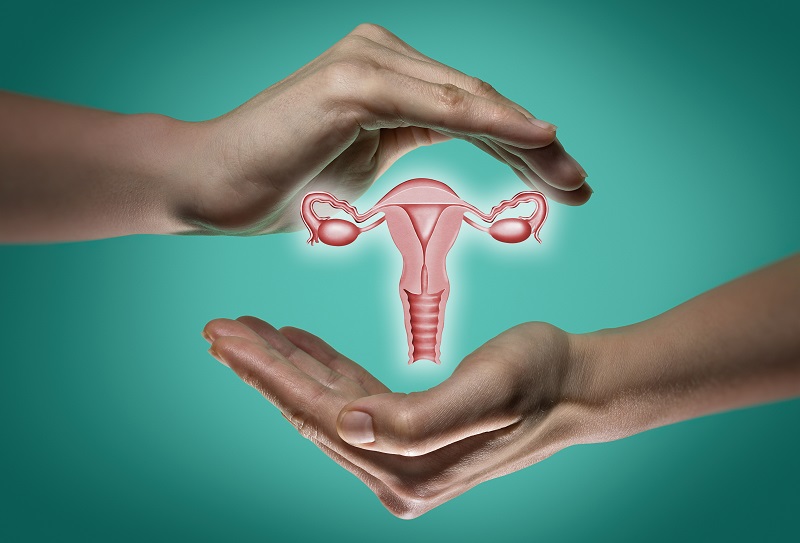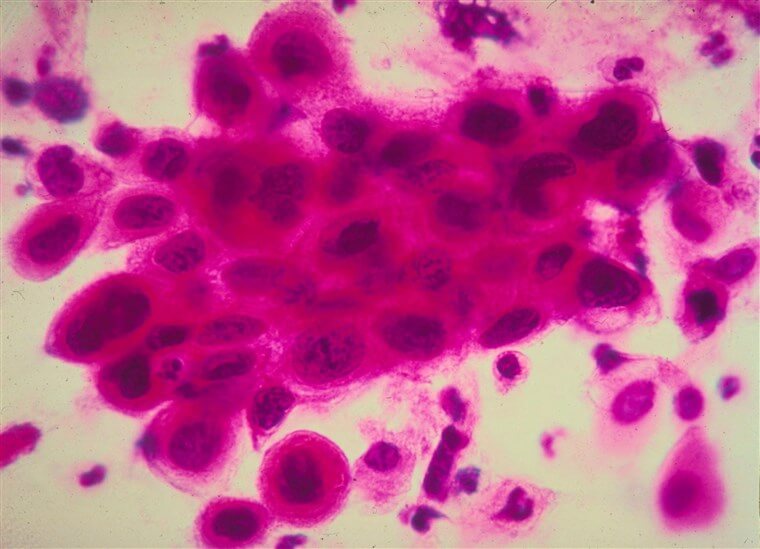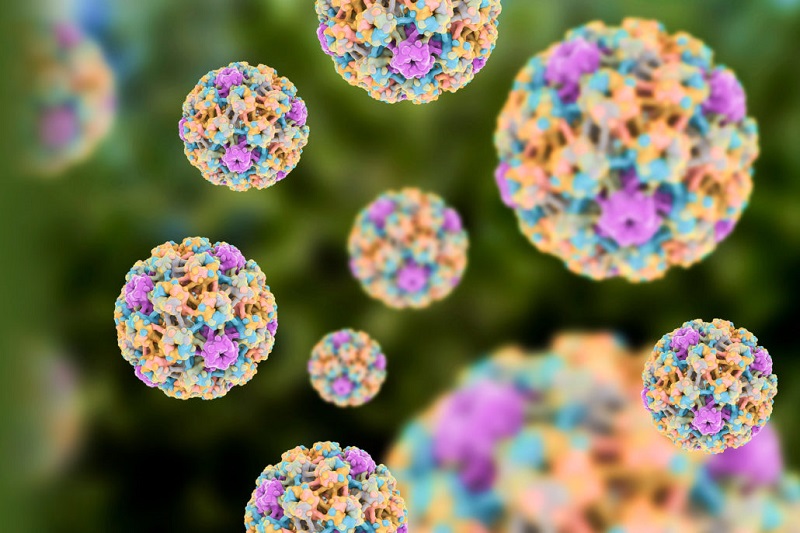Cervical cancer is the most common disease in the world today, especially in Vietnam, cervical cancer ranks 3 among the types of cancer in women. The consequences cause very serious health effects, even life if not treated early.
So, cervical cancer originated from what cause? How effective treatment is and especially what to do to actively protect health against the risk of this malignant cancer is the basic knowledge that women must learn carefully.
1. What Is Cervical Cancer?

The uterus has an upside-down pear-like appearance, which is a female reproductive organ called the womb. The uterus is located between the bladder and rectum. The structure of the uterus consists of 3 parts: The large bulging part is the base of the uterus, with 2 ovaries connected to 2 fallopian tubes on both sides, finally, the cervix has a small shape leading to the vagina.
The size of the uterus depends on the condition of each person and changes with age. Usually, in adulthood, the uterus has an average size of 8x5x3cm. The uterus has an important function in regulating the amount of blood each month during a woman's menstrual cycle. This is the birthplace of eggs, the environment for sperm to meet and conceive.
Thus, cervical cancer is the phenomenon of newly formed and overgrown cells with abnormal shapes forming tumors in the cervix. Causing abnormalities in the body and long-term complications of these tumors lead to the risk of death. Recent statistics show that in Vietnam for every 100,000 women, up to 20 people get cervical cancer. It is worth mentioning that out of 20 people infected with up to 11 cases are at risk of affecting their lives and not pass away.
2. Causes Of Cervical Cancer

Cervical cancer is a common disease today. The proportion of people with cervical cancer is high in the age group 30-50, rarer in women under 20 years old. The most common causes of cervical cancer are:
Human Papillomavirus (HPV) (Human Papillomavirus) is a group of up to 200 viruses that include two types, low-risk HPV and high-risk HPV. This is the main cause of cervical cancer, often sexually transmitted, accounting for 70% of the risk of infection.
People with genetic factors, in the family of members who have close relationships with the cervix, are also 3 to 4 times more likely to have the same disease than normal people.
In addition to the main cause of infection from the HPV virus, there are the following risk factors for cervical cancer:
- Women who have had sex are more likely to get the HPV virus through sexual contact.
- Women with multiple sexual partners or married many times are 10 times more likely to get HPV than those with 1 sex partner.
- Women who undergo childbirth often have a higher risk of cervical cancer than those who have never given birth.
- Infection with sexually transmitted diseases such as Papillomavirus, Herpes Simplex creates a favorable factor leading to cancer.
- The immune system is weakened.
- Using tobacco and other stimulants.
- Using contraceptive methods such as insertion, oral contraceptive pills.
- Chronic cervicitis, often not paying attention to clean genitals or hygiene.
- Inadequate nutrition, serious vitamin A deficiency, in the long run, will lead to poor resistance and risk of cervical cancer.
3. Symptoms Of Cervical Cancer

Cervical cancer develops through 4 stages:
Stage 1: HPV virus enters the body
Stage 2: Pre-cancer (There is the appearance of cancer cells)
Stage 3: At the onset of disease, tumors grow strongly, causing obvious symptoms
Stage 4: The tumor has spread to other parts of the body, high risk of death
Signs and symptoms are different at each stage. For the first stage, signs of cervical cancer are often quite vague, easily confused with common gynecological diseases.
Vaginal bleeding
Vaginal bleeding during the menstrual cycle is normal. However, vaginal bleeding during non-cycle days appears with high frequency is an unusual sign of the body, hidden diseases. Depending on the condition of each person will have different amounts of blood. But in general, if this happens you need to go to the hospital to have it checked immediately.
Abnormal vaginal discharge
In a healthy woman, vaginal discharge is usually white in a slightly viscous color like egg whites, with no bad smell. In some cases of infection or infection, women often feel itchy vagina, vaginal discharge more, unusual colors (yellow, or dark brown) with an unpleasant odor.
Menstrual cycle disorders
Another possible sign of cervical cancer is a disrupted menstrual cycle. When the body's hormones change, the ovulation cycle will also change, causing menstrual disorders. The cycle usually goes on the wrong day, lasts, or is shorter than usual. The discharge is black or the colors are not the same as before. Now you need to monitor your cycle and see a doctor get an accurate diagnosis.
Painful, bleeding sensations during sex
Quite similar to the problem of common gynecological infections when having sex, it will be painful and even bleeding. However, one thing that is different is that this condition lasts often, the burning pain lasts even though taking medicine but does not go away. This is a dangerous sign that could be an early symptom of cervical cancer.
The body feels unusual pain
When you feel frequent lower abdominal pain or pelvic pain, back pain usually comes on suddenly. The pain will then become more frequent and gradually spread down the leg, causing swelling that is uncomfortable to walk, which could be a sign of pelvic inflammatory disease or cervical cancer.
Anemia
Anemia can also be a sign that you have cervical cancer. Because at this time, the number of red blood cells in the body must be converted into a large number of white blood cells to fight the pathogens that lead to anemia. With vaginal bleeding, prolonged menstrual disorders will also cause anemia.
Unusual urination
When cervical cancer is in an advanced stage, metastatic cells will lead to burning, burning pain, urinary retention, but the feeling of wanting to urinate often.
Body fatigue, weakness
The body is often tired, distracted, have anorexia, and is unable to control weight loss without any specific cause. In addition, having frequent pain from cramps, leg pain is most likely a sign that you are infected.
4. How To Prevent And Treat Cervical Cancer

How to prevent and treat cervical cancer? This is very much interesting when people learn about this disease. Let's first learn about cervical cancer treatments!
Treatment of cervical cancer
Treatment of cervical cancer is relatively complicated, depending on the stage of the disease will have a certain rate of recovery. Cervical cancer screening is an important factor that has great significance to help doctors quickly detect disease in an early stage, increasing the cure rate up to 80%. This is also a way that patients can actively protect their health and limit the risks that the disease causes.
Depending on the patient's condition, there will be different treatments. Currently, cervical cancer treatments through surgery include:
- Removing the cervical part and the upper part of the vagina but still retains the uterus to help women still be reproducing. Usually applied to the disease at an early stage, cancer cells have not invaded and metastasized to other parts of the body.
- Amputation of the uterus for severe illness. Although the ovaries and fallopian tubes are retained, at this time the woman is no longer able to become pregnant.
- Pelvic segment surgery: Doctors are forced to remove the uterus, cervix, and pelvic organs when cancer cells have spread to other organs.
There is also a treatment for cervical cancer that is commonly used is radiotherapy using X-rays and ionizing radiation to destroy cancer cells.
Chemotherapy is given when the disease is advanced and prevents cancer cells from spreading. But this method often causes many side effects.

Prevention of cervical cancer
- Practice reasonable living and resting habits.
- To have a scientific diet full of nutrients and limit harmful foods.
- Get vaccinated with HPV vaccine between 9 – 26 years old.
- Have a healthy sex life.
- Clean the genital area properly.
- Avoid overuse of birth control pills.
- Should go to cancer screening to detect the disease at an early stage for better treatment and peace of mind.
Your sex life and cervical cancer

Whether cervical cancer can be relational is something that women are very worried about affecting their mental and sexual life in addition to suffering physical pain from abuse.
Actually, the answer is yes. So, you can safely "maintain" having sex without having to worry about other issues. But one thing to note is that when treating cervical cancer, side effects are inevitable, causing damage to the dry vaginal area, reducing libido … Affecting the quality of marriage.
Therefore, it is necessary to have a way to maintain sexual health after a reasonable treatment, need the perseverance to sympathize between men and women. Besides, you can look to medical experts for advice and reasonable treatment to help you improve the above problems.

Thus, cervical cancer is a very dangerous disease with many potential risks and not easy to treat. Realizing the undesirable harms of this disease, it is best to take preventive measures, keep reasonable living habits to reduce the risk of disease is a way to proactively protect our own health.
To learn more information on our services and medical check-up package promotion, please visit here.
The site cannot and does not contain medical advice. The medical information is provided for general informational and educational purposes only and is not a substitute for professional advice. Accordingly, before taking any actions based upon such information. We encourage you to consult with the appropriate professionals.

 1900 1717
1900 1717 